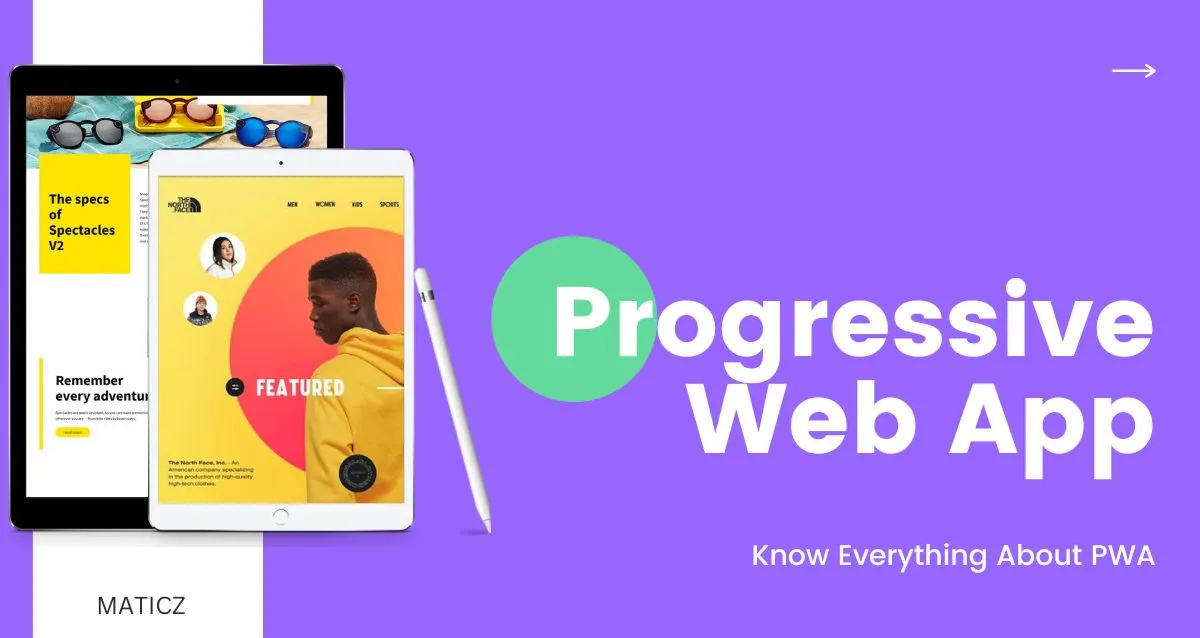Share Posts

What is Progressive Web App? Top PWA Examples in 2025
127
4341
103
What is a Progressive Web App?
A Progressive Web App (PWA) is a hybrid application that incorporates the best features of websites and apps, making it a platform that outperforms websites and apps. PWAs are built keeping in mind that when a user requires service they don’t have to be directed to the app store thenforth launching and installing it to make use of that service. A simple search query will locate the PWA for users to access almost instantly.
PWAs make it easier for e-commerce merchants, they don’t have to create a native app from scratch for users to opt for their service. Similar to YouTube videos, PWA content can correspond progressively, meaning they can work on any device, They provide the end user with a richer, more reliable, installable, and responsive design than a traditional one.
PWA Examples: Popular brands like Starbucks, Trivago, Flipkart Lite, Forbes, and Twitter Lite are the best-known brands that have incorporated PWA technology into their apps.
What are the Benefits of Progressive Web Apps?
Progressive Web Apps strive to level up their features to that of native apps and websites and most importantly attempt to give the end user relevant information without actually having to compromise on quality. Let us take a look at the top benefits progressive web apps have to offer.
Capability that Blurs the Line Between Native Apps
Native apps are exclusive to have capabilities that are out of the web’s reach and only new and advancing APIs can incorporate such performance to the web with features like media control, clipboard access, system file access, etc., All of the said qualities are built in a PWA application and it is safe to say that progressive web apps are constantly growing.
Reliable Under an Unstable Network
Applications ought to be used without a network connection, end users expect apps to function as normally as possible during dropping and unstable networks, or even offline. Users prefer to be informed that there is difficulty loading instead of abruptly crashing. The recent content that users are acquainted with is awaited to show up a be usable.
Easily Installable and Browsable with Unhinged Performance
Progressive Web Apps, when installed work just like a site as key features that are solely reserved for browser-like circumstances are also can be used. PWAs can inscribe to permit content from neighboring applications or the default app to maneuver different forms of files. These apps work in a standalone window rather than opening a browser tab, launchable on the device’s home screen, taskbar, and shelf, making the user feel like the web app opened is a part of the device they are being installed on.
Minimized Bounce Rates
E-commerce businesses that have launched PWAs have reported a minimization in bounce rates. As PWA works offline, users can continue to browse even when they are not connected to the internet. They would have to abandon their buying method if they were any other online merchant.
On the other hand, PWAs load instantaneously even when the network is offline. Because they use placeholders that are ready to be populated with downloaded content, they are incredibly lightweight and give consumers the impression that the app loads quickly.
Hoisted Conversions, Engagements, and Revenue
The majority of consumers give up during the checkout process; there could be several reasons for this, and ironically, 80% of mobile purchases result in this behavior. Progressive Web Apps, with their full-screen functionality and well-performing websites, are ideal for achieving effective conversions. Clients are drawn in by push alerts, which encourage re-engagement. PWAs increase conversions, engagement, and income when all supporting factors are taken into consideration.
Unmatched User Experience
Progressive Web Apps provide user experiences far out of the reach of websites and native apps. Offline access, faster loading pages, high response mechanism, works perfectly fine with flaky network connections, and top-notch ease of use, utility, and efficiency. Users of PWAs have rated better experience than them using sites and apps.
Top Progressive Web App Frameworks
Progressive web apps are growing popular every day, but back when the term was coined and when Google started publicizing it, the application industry noticed. Both developers and businesses of all sizes were starting to look for ways to transform their existing regular apps. The rise in PWA tools and frameworks made it difficult for businesses to choose from, so we have curated a list of the best PWA frameworks based on efficiency, performance, and scope of adoption.
Ionic
Ionic is a completely free and open-source SDK for creating hybrid mobile apps. Using technologies like CSS, HTML5, and Sass, the Ionic app development suite offers services and tools for creating hybrid mobile applications.
With the use of these web technologies, any type of mobile application may be created and then made available through all native app stores. As their name implies, progressive web apps are the greatest applications created with the Ionic framework.
Top Benefits of Ionic
- Minimized cost of app development
- Short Learning Curve to Develop PWA
- Vast Library for Plug-ins to access APIs
Polymer
Using online Components, Polymer is an open-source JavaScript library for creating web apps. Google developers and GitHub contributors are developing the library. Google's Material Design design ideas are used in a separate effort to adopt modern design principles.
Benefits of Polymer
- Amazing Documentation
- PWA development tools that bring along practical with easily understandable APIs
- Wide range of base components
Angular JS
A free and open-source JavaScript web framework for creating single-page apps, AngularJS was formerly available. Google and a group of people and businesses handled most of the upkeep. By offering a framework for client-side model–view–controller (MVC) and model–view–view model (MVVM) architectures, together with components frequently found in web applications and progressive web apps, it sought to facilitate the creation and testing of such applications.
Benefits of Angular JS
- Active community support
- Features like IntelliSense and Typescript
- Updated versions require minimal learning proficiency
Vue.JS
Declarative rendering and component composition are the main focuses of Vue.js's incrementally flexible design. The view layer is the exclusive focus of the core library. State management, build tooling, routing, and other advanced functionality needed for complicated applications are provided by officially maintained supporting libraries and packages.
Advantages of Vue JS
- Laravel and Alibaba supported
- Simple code enables learning proficiency
- Angular1 and React inspired simple features and structures
React
React is a free and open-source JavaScript toolkit for creating component-based user interfaces. It is also referred to as React.js or ReactJS. It is maintained by a group of independent developers, businesses, and Meta (previously Facebook).
Using frameworks like Next.js, React may be used to create server-rendered, mobile, and single-page applications. React apps frequently rely on libraries for routing and other client-side functions because React is primarily focused on the user experience and rendering components to the DOM.
Top Benefits of React
- Active community support
- Extensive ecosystem
- Faster rendering with DOM
Top Progressive Web App Examples
We have curated a list for you who noticed the speed and performance of their sites and increased user re-engagements, conversion, and ultimately more revenue, after migrating to PWAs. Take a look!
Starbucks
Starbucks launched its own Progressive Web App in 2017 to provide a fast, and responsive experience, and to boost customer engagement, they built a web app with fantabulous animations and offline access for customers looking to browse nutrition information and customize their orders even with no internet connection. After the launch, Starbucks reported a twofold increase in the daily active users and a 23% increase in order assortment.
Best Features of Starbucks PWA
- Efficient performance in flaky network connections.
- Seamless payment and checkout process.
- Great UI/UX
Flipkart Lite
Flipkart is an e-commerce company from India that strived to reformulate the online shopping experience with its PWA. Flipkart launched launches its PWA in 2015 through Flipkart Lite. To make sure that shopping was accessible to shoppers even under flaky network connections they launched the PWA. Product categories, sales, discounts, and bestsellers are presented. Flipkart boosted its engagement with “Add to home screen prompt” which delivered high-quality results and increased customer conversions.
Best Features of Flipkart PWA
- Consistent push notifications from the latest news, sales, and sales
- Streamlined purchase process
- Accurate search capability
Twitter Lite
In addition to being quick and responsive, Twitter Lite consumes less data, requires less storage space in the browser, and works offline with most modern browsers. The web is evolving into a platform for low-weight applications that are frictionless to install, accessible whenever needed, and updated instantly. Twitter Lite was not only more feature-rich and quicker than its predecessor, but it also took up far less storage on the device. Estimates indicate that Twitter Lite uses less than 5% of the space needed by the official Twitter for Android app. Twitter Lite resulted in a 65% increase in page views and a 20% plunge in bounce rates.
Best Features of Twitter PWA
- Fast Updates
- Less Bandwidth usage
- Browser Optimized
Forbes
The platform started developing a progressive web application in 2016, and it launched the following year. These days, Forbes is thriving in the digital economy and has a significant online presence. For brands across many different verticals, Forbes is the top choice for advertising. Furthermore, Forbes Council Members consistently contribute excellent blogs, which enables the platform to offer its audience interesting, educational pieces as well as access to a vast content collection.
As per Google, Forbes has had a 100% increase in engagements, a 50% increase in sessions, and a threefold jump in scroll depth since the debut of its fully functional PWA in 2017.
Best Features of Forbes PWA
- Immersive visual content
- Responsive and Fast-loading pages
- Readers Infographics
OLA
The goal of Ola, the top taxi aggregator in India, is to provide mobility to one billion people. Through a network of around 600K driver partners, the firm serves more than 100 Indian cities. Ola Cabs has launched a PWA to satisfy customers on inconsistent and slower networks. The progressive web application from the Bengaluru-based taxi aggregator allows customers to choose their destination, location, and transportation alternatives.
Users of the PWA can even track the location of a cab in real-time on a map after it has been reserved. Bookings on standard routes are supported when it is offline by cache data. Since its launch, the PWA's conversion rates in Tier 3 cities, have been 30% higher.
Best Features of OLA PWA
- Limited storage space
- Low bandwidth usage
- Access routes and location when offline
How do Progressive Web Apps Differ from Native Apps?
Native apps and progressive web apps are both here to deliver a seamless, rich, and personalized experience with varying strengths and weaknesses, let us take a look at how progressive web apps differ from Native apps.
| Progressive Web App | Native App |
| Multi-OS compatibility | Compatible only with specific OS |
| Limited access to native device features | Full access to native device’s features |
| Doesn’t require frequent updates | Frequent updates to ensure seamless operation |
| Lower storage requirement | High storage space is required |
| No installation required | Installation is mandatory |
| Lack of Personalization | Provides Customer Personalization |
Wrapping Up
Selecting the ideal technology for developing your next mobile application requires thorough preparation and evaluation of the project's needs, available resources, and deadlines. Native apps and PWAs each have advantages and disadvantages. Depending on several parameters, including target market, business objectives, and product specifications, you can choose as per your preference.
PWAs are a superior option for businesses looking to save money and time on development while reaching a larger audience. However, native apps are necessary if a company wishes to offer a more sophisticated and polished user experience and make the most of the device's hardware and software capabilities. to offer a more sophisticated and polished user experience and make the most of the device's capabilities.
Looking to transform your best business ideas into a PWA? Approach Maticz where world-class Progressive Web App Development Services and cutting-edge solutions are provided across diverse industries.
Tap Into the Future
The latest insights, posts, and project updates - straight to your inbox.




